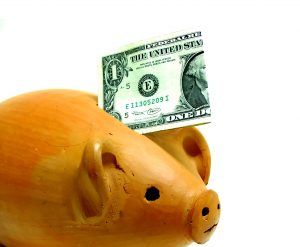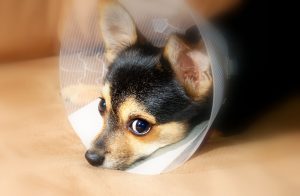When you’re considering getting a new dog, there’s probably a few things that will cross your mind. Will this new dog get along with my family? Will they be able to make friends with my current pets? How do I find the right dog for my situation? Do I have enough time to devote to a new dog? While these are very important questions to ask yourself, you should also know how much adding a new dog to your life is going to cost, and how to find the right dog breed for you.
Keep in mind: this article is not meant to dissuade you from getting a new dog, it is simply meant to inform you so you are properly prepared to take care of your dog in the best way possible. It may seem a bit overwhelming at first, but being as prepared as possible for your new family member will benefit you and your dog significantly.
Initial Cost
Before we get into selecting the right pooch for you, it is important that we go over the basics. Supplies for bigger dogs will cost slightly more than smaller breeds, but the following information will be the average amount spent on a new dog. The majority of this information will be coming from the amazing 2017 Pet Cost Guide developed by The Simple Dollar.
The initial cost of a new dog consists of breeder/adoption fee, vaccinations, training classes, and necessary dog equipment. Most breeders will charge anywhere between $2,000-$9,000 for your new friend depending on the dog breed. Shelters, rescues, and sanctuaries often charge less than $100. They also tend to include spaying/neutering, vaccinations, and microchipping in this price. Basically, you get all of the initial vet costs waived. This will bring down the overall amount you spend on your dog drastically.
In regards to necessary initial equipment for your dog, the Pet Cost Guide explains that, “There are only a few pieces of equipment that dogs absolutely need: a food and water bowl, a leash, and a crate. Beyond that, much of the equipment available for dogs is a luxury. However, this cost can increase drastically if you need to make changes to your home.” For example, do you have a yard with a fence at least four feet tall? If not, you may need to spend upwards of $1,000 upgrading your yard so your dog can play safely unsupervised.
Training should also be seen as a necessity. If your dog is not properly trained, you are risking their safety and the safety of the dogs and people around them. This could cause your bills (and stress-levels) to sky-rocket. Most group training classes range between $80-$150 for a six-eight week course, with private classes costing between $40-$100 per session. As long as you practice DAILY at home, most classes will be beneficial to you and your dog.
The initial cost of getting a new dog come to about $500 if you don’t purchase your dog from a breeder. If you do purchase your dog from a breeder, this cost can rise to $2,500-$9,500. Thankfully all of these things should be just a one-time fee, but the rest of the list will be things that you’ll have to continuously think about during your dog’s lifetime.
Medical Care
Now that you have your new dog, you have to keep them as healthy as possible. If it hasn’t already been done, you need to think about spaying or neutering your dog, and you have to get heartworm protection, flea and tick protection, and ear and dental care. If you keep an eye on these preventative measures, you will save a lot of money in the long run. Letting any one of these conditions get too out of hand will cause major financial down-falls, and the health of your pet will suffer. Without treatment, most of these issues can be life-threatening. It is crucial that you focus on controlling these issues at least once a month. If you brush your dog’s teeth on a regular basis at home, the need to take your dog to get their teeth cleaned decreases dramatically. You can also check your dog’s ears for any dirt, grime, discharge, or strange smells before taking them to the vet.
There are also breed specific health issues to keep in mind. The Pet Ownership Costs Guide explains that, “Certain breeds of dogs are more prone to medical problems than others. Some are almost infamous for them; for example, pugs and bulldogs. Most flat-faced dog breeds have chronic respiratory issues and are known for loud snoring. While that may be an endearing quality to many people, the snoring is a result of the animal struggling to breathe. German Shepherds are also prone to a number of problems like eczema and hip dysplasia. A good rule to remember is that any animal bred to look a specific way likely has a health issue as a result. King Charles Cavalier Spaniels are prone to brain injury because their skulls have been bred almost too small for their brains, while English Bulldogs face a number of joint issues as well as skin issues.” The vet bills for these issues could be astronomical, let alone the pain and suffering that your dog may be feeling.
Feeding
Feeding your dog may seem like one of the easiest steps in the process of becoming a new dog owner, but it may end up being more complicated than you expect. If you truly want to give your dog a long, healthy life, you should be feeding them medium to high quality food. This does not necessarily mean that you need to be spending $80 a month on dog food. There are some reasonably priced, good quality foods available. The absolute best place to go with any dog food questions is Better Life Natural Pet Foods. They will help you find the best food for your dog in your price range.
My dog, Annie, is the perfect example of the surprisingly difficult nature of feeding. As I’ve discussed in some previous articles, Annie is severely allergic to grass, grain, and potato. This may not seem like that big of a problem, but it is. If she gets a bowl of the wrong food, she will have a rash and hives the next day. It has been a real learning process to get her on the right food, but over the past year of trial and error, she now eats Zignature brand food. This is the only brand I’ve been able to find that consistently helps her skin stay clear. Unfortunately, this brand ranges between $60-$90 for a large bag. Annie’s health is definitely worth the price, but it goes to show that expenses for your dog can arise where you least expect.
Further Thoughts
This is a lot of information, yet it is only the beginning! In the next segment of this series, we will be discussing the possible total cost of a new dog and how to pick the right dog for you. Stay tuned for more! Also, check out this previously published article about adopting and raising a puppy.
Jessica Smith, Associate Editor, having been raised in a household full of dogs, guinea pigs, hamsters, and all things furry, Jessica’s love of animals has only grown over the years. She is currently volunteering for Safe Haven Animal Sanctuary in her free time when she isn’t out and about with her ridiculous pit bull mix, Annabel Lee, or taking care of her two goldfish, Carrot Cake and Winchester. She is also putting her literature degree to use by working as an editor for a local online magazine, Independent Noise. While she has no plans for the future, she knows that it will be filled with fur and fiction galore. You can e-mail Jessica at associateeditorjessica@yourpetspace.info – See more at: https://www.yourpetspace.info/your-staff/







Pingback: What to Know Before Getting A New Dog: Part II
Pingback: Finding the Perfect Dog
I’m almost ready to take the leap! Just need to find my furry soulmate.